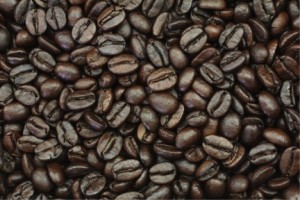
There’s more happening on your plate than you think. Molecular gastronomy uses modern science to examine cooking — not only the physical and chemical transformations of everyday ingredients, but also the creative and visual aspects of food preparation. What molecular gastronomists discover may open up new possibilities for inventive chefs and provide a more innovative dining experience for consumers. Molecular gastronomy also explains the science behind some interesting food-related phenomena.
How does color affect taste perception?
Say someone is presented with two identical scoops of vanilla ice cream, one served in a white bowl and one served in a black bowl. Does the ice cream taste the same either way? A recent study suggests otherwise. In a joint study between the University of Oxford and the Polytechnic Institute of Valencia, researchers prepared identical strawberry mousses on black and white plates and asked participants to rate each sample’s perceived sweetness, flavor intensity, quality, as well as their overall liking of the sample. The results were revealing. In all four attributes, the mousse on the white plate scored higher on average than the mousse on the black plate, suggesting the existence of a strong connection between the perception of food and plate color. Such findings could prove useful to restaurants and other related industries in the marketing of food products.

How is coffee decaffeinated?
Coffee is ubiquitous. What begins as a lowly bean becomes a high-profile beverage whose image is plastered across billboards and featured in TV ads, finding its way into the hands of millions. And thanks to decaffeinated coffee, people who are sensitive to caffeine can still enjoy the taste of coffee without any of the negative side effects stemming from caffeine.
There are two main methods of decaffeinating coffee: water processing and the direct solvent method. In water processing, green coffee beans are soaked in water to create a concentrated extract; then, the caffeine is filtered out. The resulting low-caffeine extract acts as a chemical sponge that soaks up caffeine from new batches of beans without compromising their flavor. After absorbing the caffeine from each batch of beans, the extract can be cleaned and reused. Running the extract through a layer of charcoal, usually coated with sucrose, absorbs the caffeine that it was bound to.
In the direct solvent method, coffee beans are directly rinsed with a solvent, typically methylene chloride or ethyl acetate, which dissolves caffeine and removes it from the beans. The beans are then collectively steamed to recover the solvent. As this method only removes a small amount of caffeine per cycle, coffee beans are typically rinsed multiple times until the level of caffeine has been satisfactorily reduced.

A wine cellar designed for the aging and storage of wine. Courtesy of Apex.
What affects the taste and texture of wine?
“Good things come to those who wait.” This old English proverb was not just endorsing the virtue of patience; it was commenting on the pleasure of having a fine glass of Bordeaux. But what affects each wine’s taste and texture, and why do some wines age differently from others? The answer boils down to three things: tannins, acids, and fruit.
Tannins are naturally occurring biomolecules that can be found in fruit skins and seeds. They add a bitter and astringent taste to wine, giving what is called a “dry” texture. More importantly, tannins are a key factor in aging wines. As time passes, tannins within the wine will bond to each other and eventually pool as sediment, giving the wine a smoother feel. Thus, the more tannins a wine has, the more of a texture change it will undergo.
Acid is another important quality that must be considered when a wine ages. Like tannins, acids also contribute to the taste of wine by providing tartness. For winemakers, it is important to find the perfect balance between acid and tannin levels to produce a well-rounded wine. The acidity of a wine mainly depends on the type of grape used, as some types of grapes are more acidic than others.
Unsurprisingly, a wine’s fruit content also affects its taste over time by contributing fructose and glucose. The ratio of fructose and glucose in a grape generally depends on the age of the grape: Grapes begin with high glucose levels, but as a grape matures, levels of fructose will gradually overtake levels of glucose. High levels of fructose in overripe fruit can preserve a wine’s sweetness over time, but along the same vein, they can also make a wine taste like rotten candy.
Cover Image: Molecular gastronomy gives rise to some wacky foods. The arugula spaghetti here was prepared using an air-filled syringe and agar-agar, an algae-extracted, heat-resistant gelling agent. Courtesy of Molecular Gastronomy Network.
